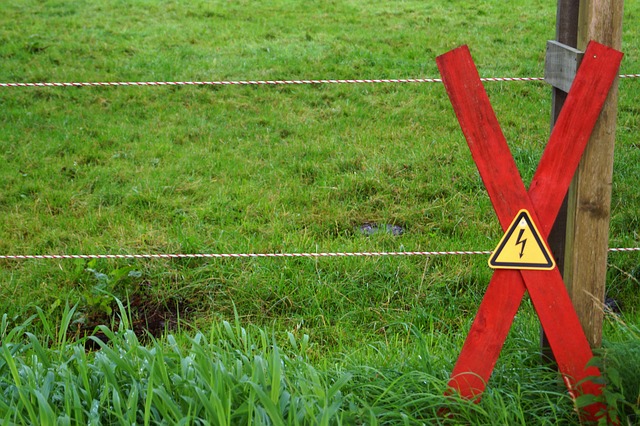For New Bedford homeowners seeking to preserve the privacy and aesthetic appeal of their outdoor spaces, maintaining a privacy fence is paramount. This guide delves into essential tips tailored to New Bedford’s unique considerations. We’ll explore different types and materials, emphasizing the importance of a regular cleaning and maintenance routine. Learn how to inspect for damage, perform necessary repairs, and understand when professional assistance is more suitable than DIY projects.
- Understanding Privacy Fences: Types and Materials
- Regular Cleaning and Maintenance Routine
- Inspecting for Damage and Wear
- Essential Repairs and Replacement Parts
- Professional Help vs DIY Projects
Understanding Privacy Fences: Types and Materials
Privacy fences serve as more than just a barrier; they are an investment in your home’s security and aesthetic appeal. Understanding the different types and materials available is crucial for New Bedford homeowners looking to maintain their privacy fences effectively. Wood remains a popular choice due to its natural beauty and versatility, offering various styles from classic picket fences to sleek, modern designs. However, metal fences, often made of aluminum or steel, are gaining traction for their durability and low-maintenance requirements. Vinyl is another material that’s growing in popularity; it requires minimal upkeep and comes in a wide array of colors and textures.
Each type offers unique benefits and challenges when it comes to maintenance. Wood needs regular cleaning, staining, or painting to prevent rot and decay. Metal fences are resistant to rust but may require occasional touch-ups with paint to maintain their finish. Vinyl is known for its easy care, requiring only periodic washing and minimal upkeep. Understanding these nuances will help homeowners make informed decisions about which privacy fence material best suits both their needs and lifestyle.
Regular Cleaning and Maintenance Routine
Maintaining your privacy fence involves more than just keeping it visually appealing. A regular cleaning and maintenance routine is essential to ensure its longevity and effectiveness in protecting your privacy. Start by sweeping or brushing away any debris, leaves, or twigs that may accumulate on top of the fence. Use a soft-bristled brush to gently scrub any dirt or stains, especially in areas with heavy foot traffic or exposure to weather elements.
Regular washing with mild soap and water can help remove stubborn marks. After cleaning, inspect for any damaged panels, posts, or hardware. Tighten loose screws, replace worn-out components, and sand down rough spots as needed. Applying a fresh coat of paint or sealant annually will protect the fence from moisture, UV rays, and general wear and tear, maintaining its integrity and ensuring your privacy for years to come.
Inspecting for Damage and Wear
Regularly inspecting your privacy fence is an essential part of maintenance, especially in New Bedford’s ever-changing climate. Keep an eye out for any signs of damage, such as warped or broken boards, rotten sections, or loose posts. These issues can not only compromise the fence’s effectiveness but also affect its structural integrity. Look for wear and tear, especially in areas exposed to the elements, like near gates or at the base where ground conditions might be challenging.
During your inspections, consider checking for signs of pest infestation or disease, as these can lead to further damage if left untreated. Early detection of problems allows for more straightforward repairs and helps extend the fence’s lifespan. Addressing issues promptly will also ensure that your privacy fence continues to provide the security and seclusion you desire for your New Bedford home.
Essential Repairs and Replacement Parts
When it comes to maintaining your privacy fence, identifying essential repairs and replacement parts is crucial. Start by inspecting the fence for any signs of damage, such as broken boards, loose posts, or rotting components. These issues not only affect the aesthetics but also compromise the structural integrity of your fence. Regularly replacing worn-out parts like pickets, brackets, and fasteners can prevent larger problems down the line.
Keep a well-stocked supply of replacement parts tailored to your fence’s material and design. For example, wood fences may require specific types of screws and stains, while vinyl fences might need replacement panels or clamps. Having these on hand allows for prompt repairs, ensuring your privacy barrier remains effective in protecting your home and personal space.
Professional Help vs DIY Projects
When it comes to maintaining your New Bedford home’s privacy fence, deciding between professional help and DIY projects depends on several factors. Hiring a professional offers expertise and guarantees but can be more expensive. On the other hand, doing it yourself allows for cost savings and gives you complete control over the process, but requires time, tools, and skills.
For simple tasks like cleaning, minor repairs, or replacing a few boards, DIY methods are suitable. However, complex issues like structural repairs, installations, or extensive replacements benefit from professional expertise to ensure longevity and maintain aesthetic appeal. Consider your comfort level with tools, available time, budget, and the fence’s condition when making this decision.
